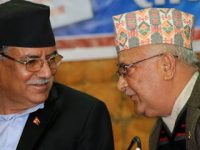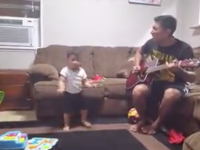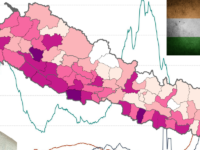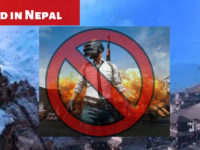It is always the young generation who are abreast with the popular culture phenomenon, like the songs, TV shows, music, movies and sports. As a socially conscious active person, such opportunities are rare. In the social media age, viral songs or items manage to encroach upon our shell and connect to the wider world. In the totally transformed era of global pandemic, much more has changed and even the songs have been affected. Jhari is one such song, affected by the time, and reaches out to all of us feeling some separation anxiety.
Jhari (rainfall) is a product of the pandemic age. It was created by collaboration of people located in different parts of the world, from the US to the UAE. The collaboration between the team members based in North Carolina, Colorado, and Dubai certainly is an achievement in itself, and particularly poignant when the theme is a universal one of separation. In the pandemic induced social distancing, the fate induced family separation comes out in a stark complementary and contradictory manner.
Check this out too: Birendra Suwal Singh Makes his Debut As a Lyricist with “Saayad Yahi Hola Maya”
Asked to write a review, I first listened to the song only, and it appeared like a love-lorn song of separation, the usual boy girl routine. It reminded me of another song, the most classic rain related song, “Asarai ma mahina ma, pani paryo rujhaune.” Then it reminded me of the last viral song about family separated by foreign employment, “Suna Saili.” This song too is also about separation, as heart-wrenching as any separation can be, this one is the first one I have come across where the pain is that of a separation of a father and son. I was startled a bit when I not only listened to the words, but also watched the visual on YouTube. The artistic graphic of a little boy hanging out with his beloved dad gave a different meaning to the word. Not every pang of pain has to be romantic. The melancholic rendering of the song, shows that the lyricist and singer are still little boys haunted by the distance with the inspiration father figure, but somewhat soothed over by technology.
Biren Suwal Singh wrote the song in an anxious memory of his father who lay sick in Nepal, and eventually lost him. His pain can be related to almost all Nepalese of this era as families are separated in search of better education and livelihood. Every member of the song team also relate to the sentiments of the song and have some sorrow within them.

Visual arts by Bishwa Harsha Bajracharya compliments and enhances the joy and sorrows, while the vocal of Bijay Adhikari gives the depth with his rendition and his soothing guitar works, just like Ashish Singh who played the piano and made the arrangement felt the energy just hit him naturally. Ashish is also the nephew of Biren.

There is a lot of creativity. Being in different parts of the world was a challenge, but that’s the beauty of the internet. Jay Harper
Another unique aspect of this project includes the participation of Jay Harper (Drums, Mixing,Mastering) from North Carolina. This is not the first that jay had participated in projects involving Nepali music because of his connection and friendship with Bijay.
Although he doesn’t understand Nepali language, ” being a father of grown children, he could relate to the song in deeply personal ways. He explained it in the following way: “Being a father of grown children who live long distances, I can relate to the song from my perspective. I cherish the memories of their childhoods. This song is very dear to my heart, as well.”

Check this out too: The Story Behind Diwas Gurung’s “Laijau”: Interview & Video
It shows that all the team members were touched by the song, and in bringing it out by remote collaboration, it exposes the universal pangs of separation. It grows on your soul the more you listen to it. It did to me.

The writer is a graduate of Arizona State University in Political Science. He is working as a social activist and motivational speaker for students across Nepal since 2007. He also blogs at Strong Blog.
The views and opinions expressed in this article are those of the author and do not necessarily reflect the official policy or position of Nepalisite.






















